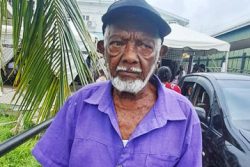E-Networks has launched a slew of new services as part of the celebrations marking its 10th anniversary but questions linger over whether they are being enabled by government’s new fibre-optic cable.
The company has launched DreamTV, allowing high definition television channels with clearer, brighter picture; OnFiber, which uses the latest in fibre optic technology to provide internet service via fibre optic lines for reliable downloading and streaming; and Control4, which is said to be an automation solution giving its user the ability to control everything from lighting, music, video, generator and security systems from a single apparatus.
In an information supplement in last weekend’s papers, the company stated that since its launch in 2003, E-Networks has been offering its communications amenities to large corporations, small businesses and residential users throughout the country.
“With its internet facilities, Digital IP television and information technology services, E-Networks has emerged as one of Guyana’s leading companies in the IT sector. In 2007, its 12-channel cable TV service was introduced. Today there are over 80 channels available,” the supplement said.
Writing in the supplement, Chairman of E-Networks Rakesh Puri said that after the successful launch of WiMax in Guyana in 2010, the company stayed true to its mission of being the leader in broadband technology “by introducing fibre-optics technology that will change the way people use the internet in their homes and businesses.”
Puri said that the future of communications in Guyana now lies in OnFiber, which he said provides speeds of up to 10 megabits. “The possibilities are endless for nearly everyone as the service was calculated to be affordable, manageable and attainable,” said Puri.
“DreamTV gives you the power to enjoy TV like never before with High Definition (HD) channels, DVR and On Demand shows and movies,” he said. “With Control4, you can bring your home or business to the future, it offers the ultimate automation solution by allowing you to control everything from lighting, multimedia, AC and security from a single device. As a user of the system I can personal attest to the increased comfort, convenience and peace of mind the system adds to your life,” Puri said.
Writing in the spread, Managing Director of E-Networks Vishok Persaud referred to some of the challenges and successes of the company over the 10 years it has been in existence. “At its inception, E-Networks started out with the idea of servicing mainly the corporate sector with higher speed internet. We started with two employees and today we have over 100 persons. Steadily, our services expanded and in 2007 we launched our TV platform. By 2010, we increased our channel offerings from an initial 12 channels to over 80 channels. The addition of TV to our E-Network services was a major step as we embraced the concept of convergence: Voice, Data and Video on a single network, otherwise known as triple play,” Persaud said.
He said that the growth of E-Networks has not been without obstacles. He noted that the cost of capital and of bandwidth was high when compared to other places in the region. “However, by deploying the latest and most innovative technologies and providing a dependable technical backup service, we have managed to stay on top of our game,” said Persaud.
Experts in the industry believe that enterprises like E-Networks could possibly benefit from government’s E-Governance project, of which the fibre-optic cable out of Brazil is a part. It is believed that the technology that the cable brings to the IT landscape could see it powering services such as enhanced internet, cable television and voice.
Efforts to reach Persaud on whether his entity has benefited from the government’s cable proved futile.
In May, E-Governance Project Manager Alexei Ramotar refused to comment on whether the country’s US$32 million fibre-optic cable would be used to help commercial entities, such as triple-play providers of broadband internet, cable television and telephone. Government has said it has not decided whether private business enterprises will be able to tap into huge excess of bandwidth from the fibre-optic cable, though it is clear that cable companies could benefit from this resource.
There has been speculation that among its uses, the cable could go towards boosting the capacity of commercial entities, such as those operated by Brian Yong and Vishok Persaud, seen by industry actors as favoured by the administration in the allocation of cable frequencies. It has been established that no other cable operator has the capacity on par with what has been allocated to Yong and Persaud—2.5 GHz band frequencies. This prompted concerns over the fairness of the distribution of the frequencies to them.
Asked at the May press conference whether the project will see private individuals being able to purchase bandwidth, Ramotar said that government has no plans to go in this direction. He however acknowledged that there would be excess bandwidth flowing from the fibre-optic cable.





